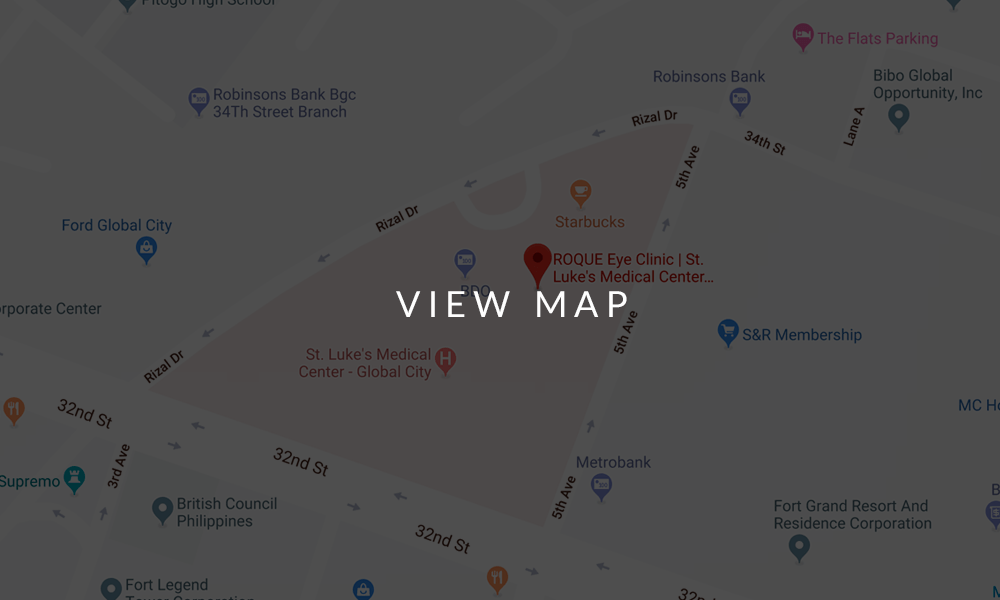ACCOMMODATIVE ESOTROPIA FAQ
Accommodative Esotropia
Accommodation is the natural ability of the lens of the eye to change in shape to make a target’s image clearer or sharper. This is accompanied by a small inward repositioning of the eyes, as the target moves closer. Accommodative esotropia is an inward deviation that results from an effort to accommodate very large amounts of refractive errors, usually hyperopia (farsightedness). Usually presenting during the toddler years, an intermittent inward eye deviation is noticed by the parents or the pediatrician when the child is tired or ill. If the appropriate pair of glasses is not given at this stage, the eye deviation may become constant. Any constant eye deviation could eventually send signals to the brain to prefer one eye over the other, allowing amblyopia to set in. Therefore early treatment means better sensory outcome. A good sensory outcome does not only mean good visual acuity, but it also means good binocular vision or depth perception.
Accommodative esotropia has a tendency to be familial, just like the refractive error that comes with it. A positive family history of high hyperopia is considered a risk factor for developing it. Although significant hyperopia can be treated with glasses, they should not be given unless they can improve vision and unless it is accompanied by a history of intermittent or manifest esotropia. Despite a strong family history, prescribing glasses on a prophylactic basis is not always recommended, particularly if the amount of hyperopia is not that significant for the age of the patient. Asymptomatic hyperopia patients would benefit from repeated visual acuity checks and cyclorefraction at regular intervals.
Early treatment with glasses ensures maintenance of normal visual acuity in both eyes, restoration of normal eye alignment, maintenance of high-grade binocularity, as well as successful weaning from glasses. It is best to give the glasses during the intermittent stage of the condition so that complications such as amblyopia and permanent eye deviation are prevented.
Cyclorefraction determines the full amount of refractive error and this amount is prescribed for the patient, in the form of single vision lenses. A patient with noticeable convergence excess at near is prescribed with bifocals, to relieve the eyes of the extra effort to accommodate at near. It is not unusual to unveil more hyperopia on subsequent cyclorefractions, so prescription glasses should be updated until the numbers are stable.
Sometimes there is a superimposed non-accommodative component on the accommodative esotropia. Approximately 30% of cases would need surgery for the residual esotropia. However, there is a need to wear the prescription glasses even after the procedure.
The power of the single vision glasses can be modified according to the change in the refractive error during cyclorefraction. Its power for distance, including the bifocal adds for some, can be gradually tapered after 8 years of age, when the accommodation reflex has supposedly matured and when amounts of hyperopia has started to decrease. A fast decrease in the amount of hyperopia is a risk factor for developing consecutive exotropia, even years after wearing prescription glasses for the accommodative esotropia. Thus the importance of regular cyclorefraction cannot be overemphasized.
Refractive surgery, although promising, is not yet approved to be used as primary treatment for accommodative esotropia in children.
- Hutchinson, A. (2012). Refractive surgery for accommodative esotropia: past, present, future. Eur J Ophthalmol, 22(6): 871-877.
- Lembo, A., Serafino, M., Strologo, M., Saunders, R., Trivedi, R., Villani, E., and Nucci, P. (2019). Accommodative esotropia: the state of the art. Int Ophthalmol, 39(2): 497-505.
- Shin, D., Choi, C., and Han, S. (2020). Risk factors for consecutive exotropia in children with refractive and nonrefractive accommodative esotropia. Jpn J Ophthalmol, Feb 27. doi: 10.1007/s10384-020-00724-5. Online ahead of print.
- Wang, J., Morale, S., Ren, X., and Birch, E. (2016). Longitudinal development of refractive error in children with accommodative esotropia: onset, amblyopia, and anisometropia. Invest Ophthalmol Vis Sci, 57(4): 2203-2012.
ACCOMMODATIVE ESOTROPIA
Without Glasses

With Glasses

STRABISMUS ANIMATION
ANIMATION
BOOK AN APPOINTMENT
It takes less than 5 minutes to complete your online booking. Alternatively, you may call our BGC Clinic, or our Alabang Clinic for assistance.
OUR STRABISMUS SPECIALIST
DR. BARBARA ROQUE
MD, DPBO, FPAO, FPCS
Dr. Barbara Roque is a specialist in pediatric ophthalmology, adult strabismus, and ophthalmic genetics. Her private practice began in 2006, after her post-graduate fellowship training at The Children’s Hospital in Westmead, University of Sydney System, Australia. Her patients are mostly children with ocular disease, refractive errors, cataracts, and eye misalignment.
OUR CLINICS
BGC CLINIC
- ST. LUKE'S MEDICAL CENTER GLOBAL CITY
2/F Medical Arts Building 217
Rizal Drive corner 5th Avenue
Bonifacio Global City, Taguig 1634
Philippines
SLMC CLINIC HOURS
- 9am - 12pm
Appointments only
ALABANG CLINIC
- ASIAN HOSPITAL AND MEDICAL CENTER
5/F Medical Office Building 509
2205 Civic Drive, Filinvest City
Alabang, Muntinlupa 1781
Philippines
AHMC CLINIC HOURS
- 1pm - 4pm
Appointments only
BOOK AN APPOINTMENT
It takes less than 5 minutes to complete your online booking. Alternatively, you may call our BGC Clinic, or our Alabang Clinic for assistance.












